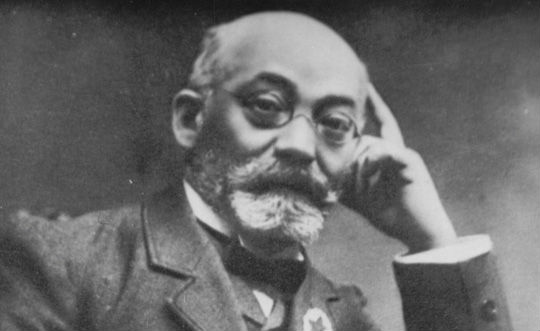Constructed Languages
Historically, languages evolve and form over time. From pronunciation and spelling to meaning and use, the languages we use have been developed over centuries.
Just take the romance languages for example. They have all evolved from Latin and each share a variety of similarities. Even the Celtic languages like Gaelic, Welsh or Manx share similar pronunciations and patterns.
But what about the languages that haven’t evolved and were just invented? Well, they’re known as constructed languages!
If you’re confused about how a language can be constructed, worry not. Our article will talk you through:
- What a constructed language is
- How they are constructed
- Examples of languages which have been manually created either for real life or fictional use.

What Is A Constructed Language?
A constructed language (or “con-lan”) is essentially a language that has been consciously created for an intended purpose.
The creator of a constructed language is called a “conlanger”, a term coined by 20th century linguist Otto Jeperson.
A constructed language can also be referred to as a planned, artificial or auxiliary language.
Constructed languages fall into 1 of 3 categories:
- Auxiliary (auxlangs): created to improve communication within a community.
- Engineers (engelangs): devised as an experiment, often to show the difficulty of creation, adoption and/or adaptation.
- Artistic (artlangs): invented by writers or authors in a bid to add depth to a fictional world.
Conlangers often know which category they fall into prior to construction, as they typically set out to create a language for a reason – rather than for fun (it’s too time consuming!)
How To Construct A Language:
Constructed languages are often based on a pre-existing language. They take inspiration from the grammar, vocabulary and phonology. Constructed languages can be inspired by one or more natural languages.
In the case of some fictional languages, they are formed completely from scratch, taking very little inspiration from existing languages.
If you fancy starting your own language, linguists suggest beginning with the sound system. Starting with how you want the language to sound will help you to create a variety of words which all work in conjunction with each other. They won’t sound out of place and you will be able to visualise them being spoken.
Additionally, 20th century linguist, Edward Sapir, once said:
“A standard international language should not only be simple, regular, and logical, but also rich and creative.”
How To Learn A Constructed Language:
They may be created in a different way, but the way in which you learn a constructed language is much the same as learning any new, natural language.
At Global Language Services we have explored a variety of ways in which to learn a new language. Explore some of our suggestions below:

Real Life Examples Of Constructed Languages
These are examples of languages that have been manually constructed and used in the real world.
Esperanto
One of the most popular examples of a constructed language is Esperanto. This is an auxiliary language that was invented by Polish doctor, Ludovic Zamenhof, in the 19th century.
It’s a simple, easy to learn language that was created in the name of unity and individualism. Zamenhof believed that all languages already in existence had strong political underpinnings.
Believing that natural languages are inherently entrenched in negative history, he set out to construct a new language in a bid to offer humankind a new beginning. And it worked!
Today there are an estimated 2 million speakers of Esperanto across the globe. It has simple vocabulary and grammar, with much of the phrasing inspired by the Romance languages – making it easy to learn and understand.
Solresol
Solresol is a language constructed by Jean-François Sudre. It was originally named “la Langue musicale universelle”, translating to the international music language.
This language was created using seven syllables which were borrowed from the foundations of music – do, re, me, fa, so, la, and ti. A fitting choice since Sudre was a violinist by trade!
Solresol was the first constructed language to be taken seriously, especially as the logic was sound. Sudre made the language simple and easy to understand in the hope that it would encourage international communication.
However, it failed to become widely popular. Nevertheless, it is still commendable for being the first and only language in the world to be musically based.

Fictional Examples of a Constructed Language:
As we’ve mentioned, some languages are constructed for fictional purposes in novels, television and movies. In fact, you could argue that fictional, or artistic construction is much more common than an auxiliary or engineered language.
Dothraki
One of the most common, and impressive, fictional languages is Dothraki. Constructed for HBO’s Game of Thrones series which was based on George R.R. Martin’s novels.
Taking inspiration from Greek, Anglo-Saxon and Gothic languages – as well as The Lord of the Rings franchise – the Dothraki language was constructed by Martin and completed by David J. Peterson.
A language created with its users in mind, Dothraki has 14 words for “horse” but no words for toilet or thank you – words the Dothraki tribe just don’t need.
We have an entire post dedicated to how the Dothraki language was created and how impressive it is. Dothraki is a perfect example of how a language can add depth to a fictional world, and if you’ve seen Game of Thrones you’ll understand just how much depth!
Elvish
A result of J.R.R Tolkein’s genius, Elvish is a constructed language used within the fantasy world of The Lord of the Rings.
A famous and intricate language that began in the early 1900’s when Tolkein penned the iconic novels. Based on Welsh and Finnish, Elvish is used within Middle Earth and split into two dialects, Quenya and Sindarin.
It has enough phrases to form a basic conversation but not for a fluent language as it’s incomplete. Fans of the franchise have made attempts to extend the language and create their own poetry, fiction and conversations from it.
Klingon
A language constructed to intentionally sound alien, Klingon was developed for the globally adored Star Trek franchise.
Full of harsh, throaty sounds, Klingon was designed to not only emphasise the alien nature of Klingons but their aggressive, violent natures.
Although incomprehensible, Klingon still manages to be constructed with nouns and verbs. Complete with its own functional alphabet, fans of the franchise are able to become fluent in the humanoid language – Duolingo even has a course!
Minionese
Whether you’re a fan or not, Minions are everywhere. The little yellow men from Despicable Me have taken the world by storm – they even ended up with their own film!
Providing nonsensical comedy into the films, Minions may sound like they’re talking gobbledygook but they are actually speaking Minionese.
It’s a fully constructed language that was hugely inspired by Spanish, Italian and Chinese, and there are actually some noticeable patterns within their speech. This makes it even funnier to the audience who hear gibberish but understand every fourth word.

Conclusion
We also think there are some honourable mentions to be made for the constructed languages used in other franchises. Like Na’Vi in Avatar, and the huge variety of constructed words within the world of Harry Potter – leading to it having its own dictionary.
For more on how languages come to be, check out our posts on neologisms and the origin of words!





